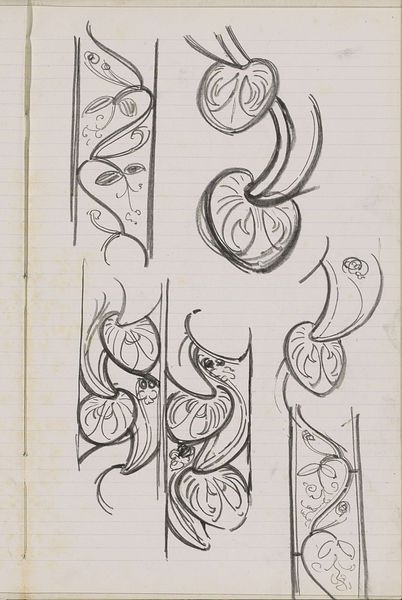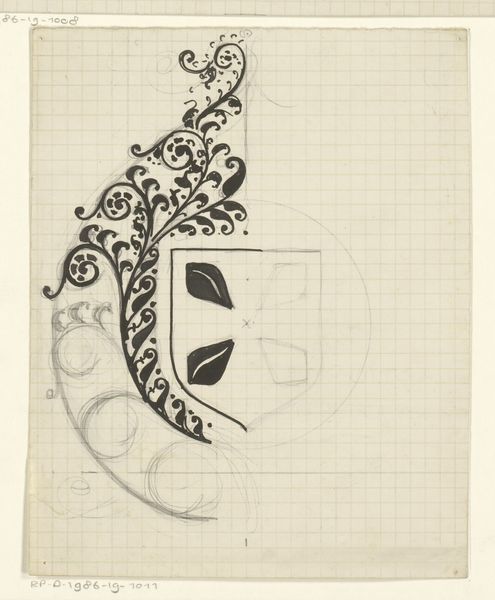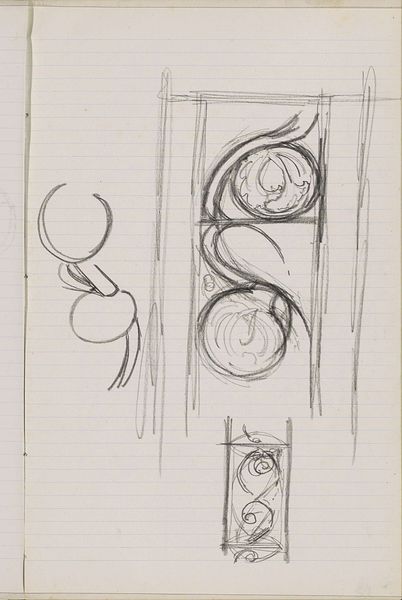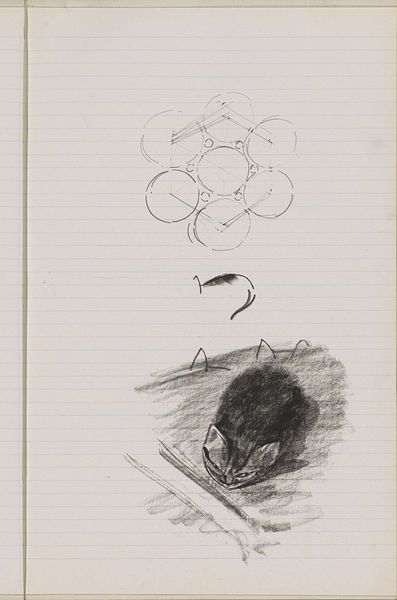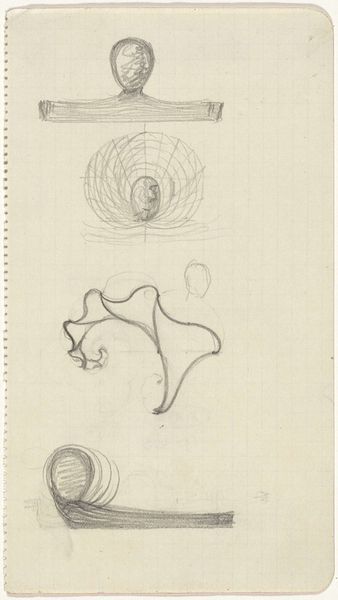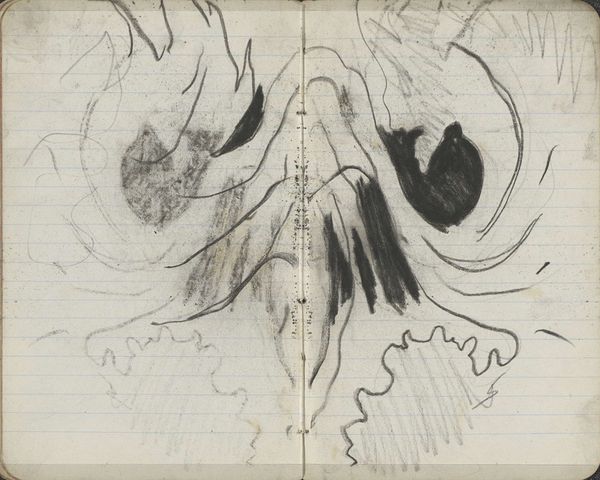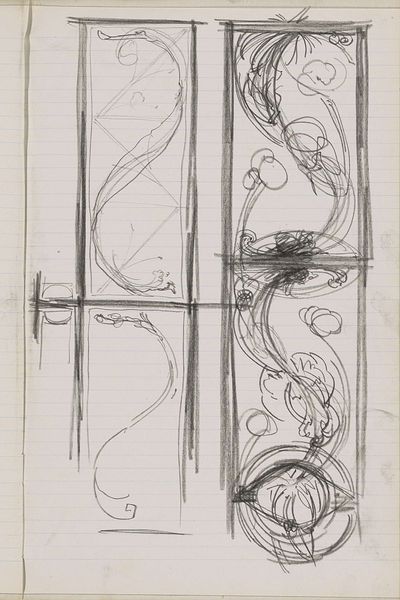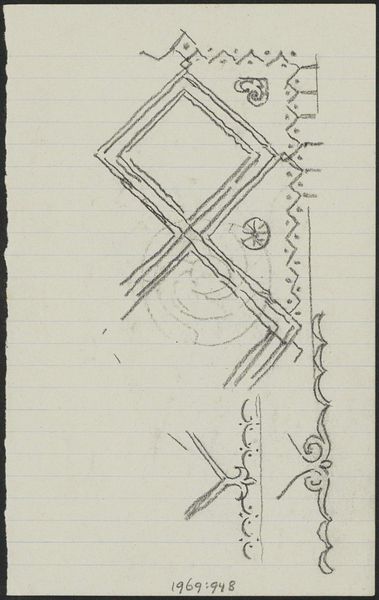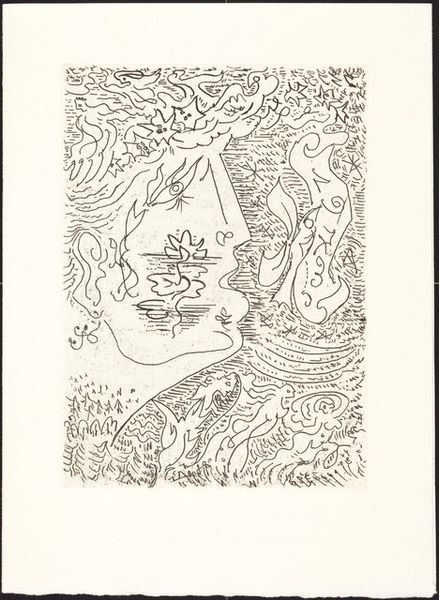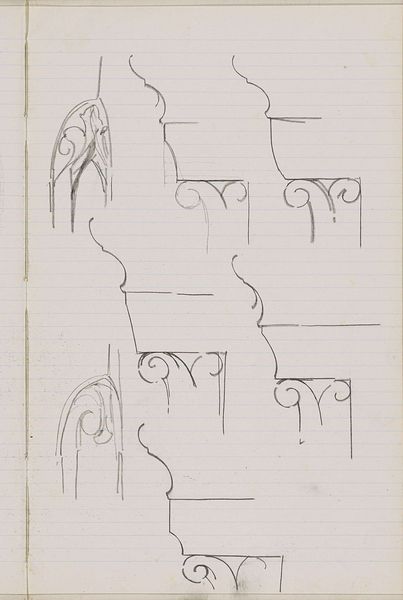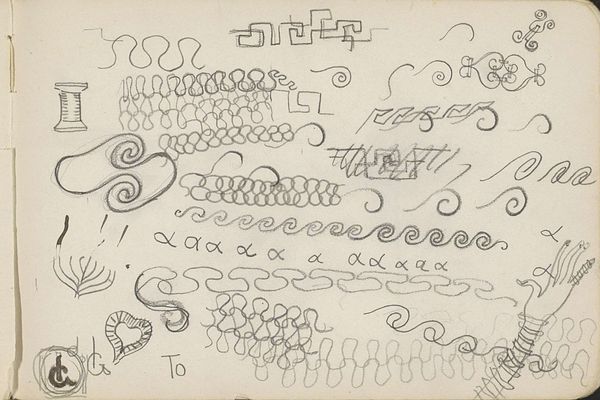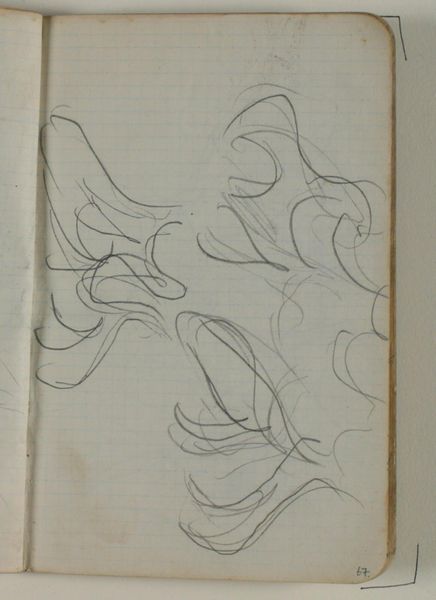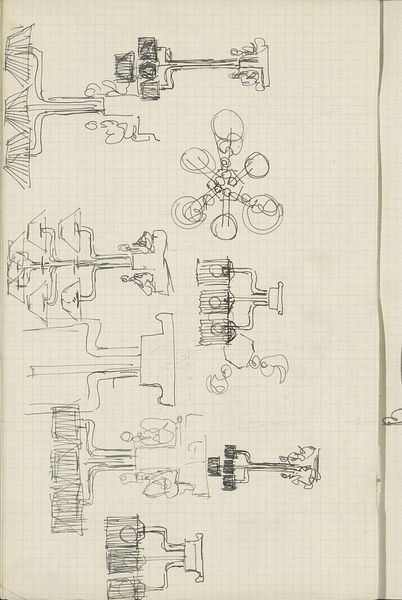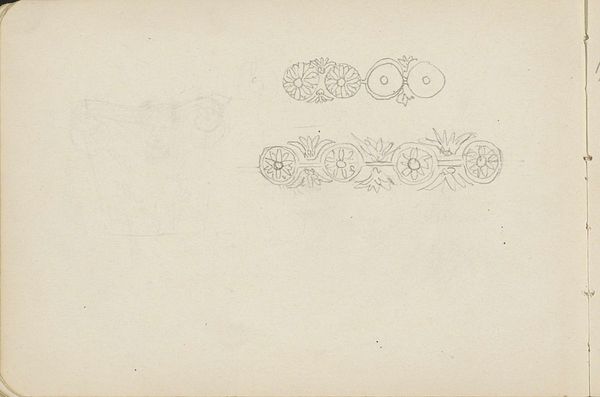
drawing, paper, ink
#
drawing
#
art-nouveau
#
pen drawing
#
pen sketch
#
paper
#
ink line art
#
personal sketchbook
#
ink
#
ink drawing experimentation
#
geometric
#
pen-ink sketch
#
pen work
#
sketchbook drawing
#
sketchbook art
#
doodle art
Copyright: Rijks Museum: Open Domain
Curator: At first glance, I'm struck by the drawing's provisional nature, almost as if it were a page torn from a personal sketchbook. Editor: Indeed. What we have here is "Ornamenten met bloem-, plant- en cirkelmotieven," or "Ornament with floral, plant, and circular motifs," by Gerrit Willem Dijsselhof, created circa 1901. It’s rendered in ink on paper, currently held at the Rijksmuseum. Curator: The recurring circular forms and radiating petals immediately conjure a sense of cyclical time and growth—perhaps even allusions to traditional mandalas, though less rigid in their geometry. Editor: The Art Nouveau style truly emphasizes the organic. Note the dynamic asymmetry and the artist’s fluid pen work. He isn’t striving for perfect replication, but rather a rhythmic interplay between shapes. Curator: The drawing’s composition seems deliberately scattered. Those hovering clusters of dots and free-floating geometric structures, remind me of the early 20th century embrace of freedom in form. It is almost as if Dijsselhof lets loose and creates without the restrictions of space. Editor: Absolutely, you can see how Dijsselhof is experimenting here with both floral elements and hard-edged forms—perhaps even considering designs applicable across various media, from textiles to architectural details. Curator: In the context of its era, the sketchbook feel might be hinting at the burgeoning interest in the subjective experience, moving from a more prescribed style. What do you feel? Does this point towards greater ideas regarding individualism? Editor: Possibly. The ornamental language does also borrow recognizable symbols such as the blossom and radial symmetry found across different civilizations. As an iconographer, that makes me believe it borrows symbolic expression and tradition from different sources, which indicates perhaps the growth of accessibility and interconnectedness. Curator: It’s an object of both studied design and intimate, unguarded expression. Editor: Ultimately, it bridges the decorative and the personal. This drawing offers an fascinating glimpse into the mind of an artist deeply engaged with the visual culture of his time.
Comments
No comments
Be the first to comment and join the conversation on the ultimate creative platform.
